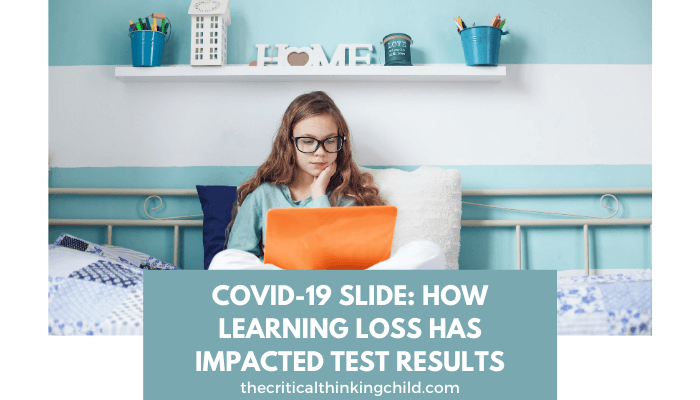Since the COVID-19 pandemic hit the country in March, schools all over the country have shut down, switched to e-learning for kids, or even frequently shifted between virtual to in-person learning. As a parent, you are likely concerned about the academic impact of school closures, inconsistency, and distance learning on your child’s academic growth. Here at CTC, we’ve dug into the research on this topic. We’ll give you the key findings as well as some takeaways you can use with your children at home.
The Study
Dr. Megan Kuhfeld and Dr. Beth Tarasawa, researchers from the Northwest Evaluation Association (NWEA), conducted extensive research on learning loss and made projections for potential learning loss from school shutdowns due to COVID-19. This phenomenon is called the COVID-19 slide. They based their research on summer learning loss data, which shows the average decline in reading and math scores over a typical summer break.
Following a national sampling of over 5 million students in grades 3-8 who took the MAP growth assessments in the 2017-2018 school year, they estimated the learning loss in both reading and math during COVID related shutdowns.
Their research estimates that when regular school resumes following the pandemic (at the time, they looked at fall 2020), students will return to school with 70% of the typical learning gains in reading compared to a regular school year, but only 50% of the learning gains in math.
Research Takeaways
The research shows that while students will experience COVID-19 slide in both math and reading, the learning gaps in math will be more significant.
Additionally, the researchers found that this learning loss is even more impactful for students from less affluent families. They write that “children from more affluent communities are more likely to come from families with financial resources, stable employment, and flexible work from home and childcare arrangements that allow them to weather this storm more easily than families who are renting their housing, working in low-pay fields that are hardest hit by the economic impacts, and experiencing higher rates of food insecurity, family instability, and other shocks from this disruption.” From this, we now know that students who are already academically vulnerable will face additional challenges during these school closures and face more learning gaps when the pandemic comes to an end.
Recommendations
Finally, the study called for several action steps from policymakers, educators, schools, and families. Here’s what they recommend:
- Further academic support, especially in math, is needed. The study showed that what we’re doing now isn’t enough. Schools should make sure students and families have access to learning materials and resources to support education at home, particularly math learning. Schools also need to work to make sure all students have access to the technology and internet they need to regularly attend remote instruction. You can help your child at home by making sure they attend all of their classes, helping with homework, and purchasing additional workbooks and tools like our math games and workbooks as needed.
- Collaboration is key for supporting our students. Research shows that it is imperative for researchers, policymakers at the state and local level, educators, and families all work together to combat learning loss. With all stakeholders involved, it’s easier to identify trends, experiment with new ideas and tools, and troubleshoot what’s not working. You can help with this at home by maintaining a clear and positive line of communication with your child’s teacher and school; while being sensitive and understanding about the difficulties everyone is facing, also be transparent about what is and isn’t working for your child.
- Educators need data to support students. Teachers need data on their students so they can plan instruction to best support them. However, with many schools operating remotely, it’s incredibly difficult to gather accurate assessment information. Schools, policymakers, teachers, and families should work together to brainstorm and adapt to changing models for giving assessments and collecting data. At home, you can help by checking in with your child regularly to get a sense of how they are performing in reading and in math, and then sharing that information with your child’s teacher.
The threat of the COVID-19 slide can be scary, but rest assured that schools and teachers everywhere are working around the clock to adapt to our changing times, prevent learning loss, and provide the best possible instruction for your child!



